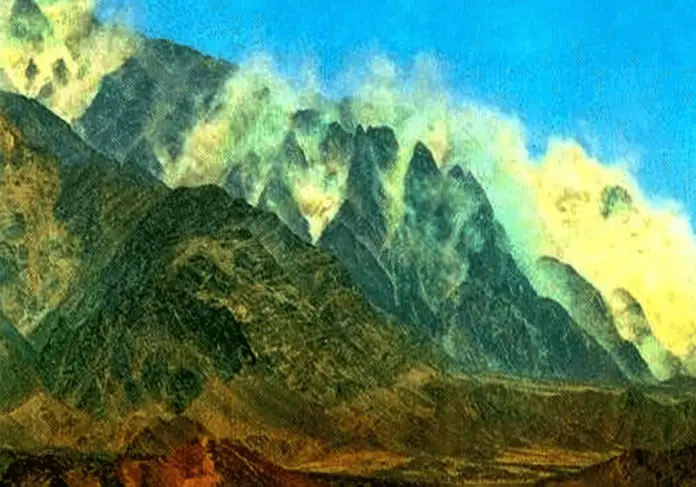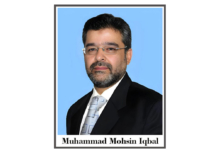Pakistan’s effort to enter the nuclear club dates back to the 1950s when it began the programme as a means to produce energy. The journey started with the help of the US and its agenda to allow nations around the world to use nuclear energy for a good cause. The programme was called the ‘Atoms for Peace’. In 1956, the government established the Pakistan Atomic Energy Commission (PAEC) in order to work on the new initiative.
The first reactor it obtained in 1962 was the five-megawatt Pakistan Atomic Research Reactor (PARR-1) from the US.In order to further efforts towards building nuclear energy resources, atomic physicist Ishrat Hussain Usmani who was the chairman of PAEC founded the Pakistan Institute of Nuclear Sciences and Technology in 1965 and sent hundreds of young Pakistani students for training abroad. This allowed for the development of a new generation of scientists who were going to help Pakistan build its nuclear capabilities in terms of energy production and arsenal.In the beginning, efforts towards building nuclear capabilities were only for energy production but as time progressed and rivalry with India became worse, the government of Pakistan seemed to move towards creating a nuclear arsenal as well. Especially after the 1965 war with India which left an even greater bitterness on both sides. At the time, Minister for Foreign Affairs Zulfikar Ali Bhutto stated, “If India builds the bomb, we will eat grass or leaves, even go hungry, but we will get one of our own”. At the time, India was just nine-year away from testing its first nuclear bomb.After the ‘defeat’ in 1971 and the separation of East Pakistan, Zulfikar Ali Bhutto aggressively relaunched the nuclear programme which had been there since the 1950s but was not actively into making a nuclear arsenal. He invited the top 50 scientists of Pakistan on January 24, 1972, to discuss the best way towards making Pakistan the first Muslim nuclear armed nation. At this point, India was close to launching its first nuclear tests and had Pakistan not launched the programme, an uneven power balance was going to be created in the South Asian region.
The initial scientific research started in 1972 under the leadership of renowned scientist and Nobel Laureate Dr Abdus Salam, however, due to religious distances and the persecution of his community, Dr Abdus Salam left the country. The programme was then headed by and taken towards completion by the likes of MIT-trained physicist Munir Ahmad Khan and Dr Abdul Qadeer Khan. Money for the programme was raised by Saudi Arabia, Iran and Libya while Pakistan sought technical help from China and North Korea and also from a Dutch centrifuge firm named Fysisch Dynamisch Onderzoek.Many Uranium enrichment plants were established at various areas such as Dera Ghazi Khan, Kahuta and Chaklala. Dr Abdul Qadeer Khan then became the face of the nuclear programme as he managed to bring in technology to produce the bomb covertly. His efforts back then resulted in him being named as the ‘father of the nuclear bomb’. With his experience at the URENCO, Dr AQ Khan had learned about the creation of the atomic bomb as he had access to the most confidential sites and information. It also allowed him to build contacts which later helped him obtain materials which could not be otherwise sourced.All this would not have been possible without Bhutto’s constant efforts. Had it not been for him initiating the goal of Pakistan becoming a nuclear power, the country would have taken much longer to fulfill this agenda and India would have used its power to intimidate Pakistan. Bhutto’s policies of involving the Muslim world and garnering their support was one of the most sensible decisions.
Shortly after the launch of Pakistan’s nuclear programme, the world community took up the idea of non-proliferation which resulted in France and Canada, which were previously actively working to build nuclear power plants in Pakistan and providing reactors, to back off.The US and European nations also condemned Pakistan for actively pursuing this objective. Therefore, Pakistan had to covertly work towards producing its own nuclear arsenal. Under the administration of General Muhammad Zia-ul-Haq, the programme continued. Finally, under the leadership of then prime minister Muhammad Nawaz Sharif, tests were conducted in 1998 in Balochistan. It is said that Nawaz Sharif was forced to not conduct tests and he was warned of sanctions and isolation, however, he went ahead allowing the tests to take place and became a proud leader of the nuclear Pakistan.On May 28, Pakistan conducted its first nuclear tests named Chagai-1, just three weeks after India conducted their second. Pakistan had become a nuclear power and the power balance was restored in South Asia. Pakistan has always stated that its nuclear bombs are for self-defense and to deter aggression. However, it does not have a no first use doctrine. President Pervez Musharraf, during his administration, stated that if attacked Pakistan will reply with full might. After 9/11 concerns grew worldwide that terrorists may gain access to nuclear technology through Pakistan and so the Pakistani government with the help of the US improved its nuclear security. Today, the civilian National Command Authority has control over Pakistan’s nuclear weapons. As of 2016, Pakistan has an arsenal of 100-120 nuclear warheads and the capacity to produce more than 200.








Comments are closed.